Preparatory stands of birch, rowan tree and alder have a different effect on the growth of underplanted fir
Silver fir is one of our native trees. Its wood production is above average. It belongs among important strengthening and ameliorative trees. At the same time, it increases the biodiversity of forest ecosystems with its high tolerance to shade. Therefore, its importance is both economic and ecological. Foresters, who strive to increase the proportion of fir in our forests, have been faced with a lack of regular rainfall in recent years and particularly the increasing of extensive calamitous clear-cut areas due to the breakdown of spruce stands
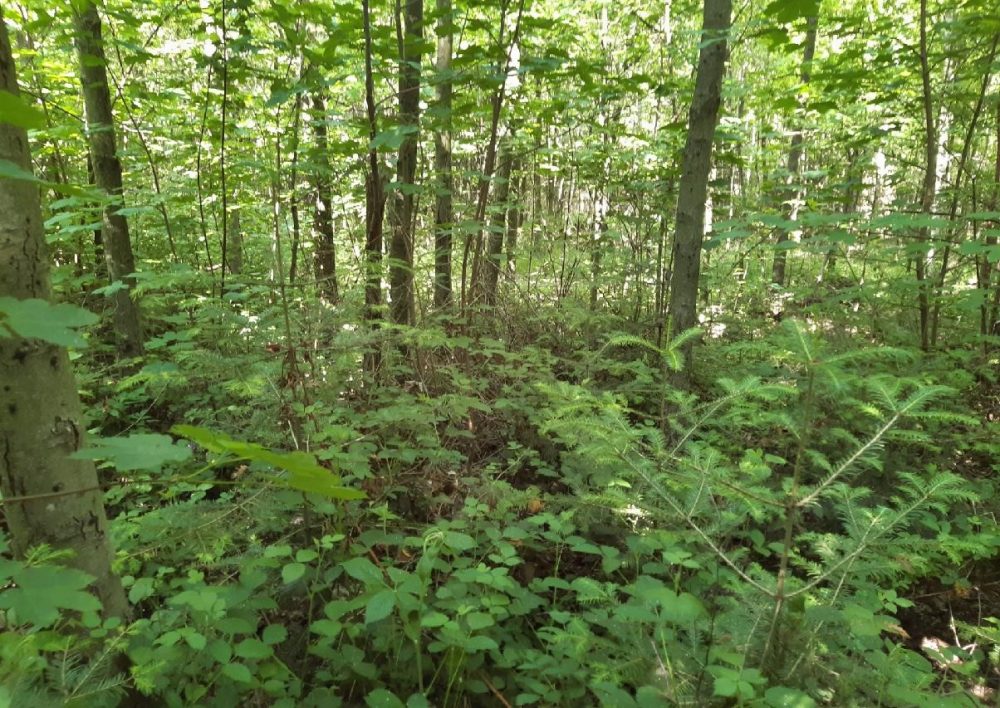 Extreme climatic stress factors, such as high and low temperatures, uneven humidity, strong sunlight, act on calamitous clearings. Due to high temperatures and frosts, the risk of drying out increases here. Therefore, the conditions for direct planting of fir are unfavourable.
Extreme climatic stress factors, such as high and low temperatures, uneven humidity, strong sunlight, act on calamitous clearings. Due to high temperatures and frosts, the risk of drying out increases here. Therefore, the conditions for direct planting of fir are unfavourable.
Photo: Underplanting of Silver fir under alder stand, author Robert Polách
The use of stands of preparatory tree species and underplanting technology within the framework of two-phase restoration is one of the options for successfully introducing of this tree species to disaster areas. The use of pioneer tree species on existing clearings allows bigger temporal and spatial variability in the creation of subsequent stands with a higher potential for future stability.
Scientists from both VÚLHM, v. v. i., VS Opočno (FGMRI, Research Station Opočno), and Mendel University in Brno focused on this method of planting fir in their research. The aim of their work was to verify the reactions of fir rootstocks to the vegetation environment of preparatory birch, rowan tree and alder stands of different density and age.
They published their results in the paper „Prosperity of Silver fir planted under preparatory stands of pioneer broadleaves of different stocking and age“ (Prosperita jedle v podsadbách pod přípravnými porosty listnatých dřevin o různém zakmenění a věku), which was published in the journal Forest Research News (Zprávy lesnického výzkumu) 4/2022.
Silver fir has higher demands on the environment (abundance of precipitation, rich and wet soils), needs shade and suffers by late frosts at a younger age.
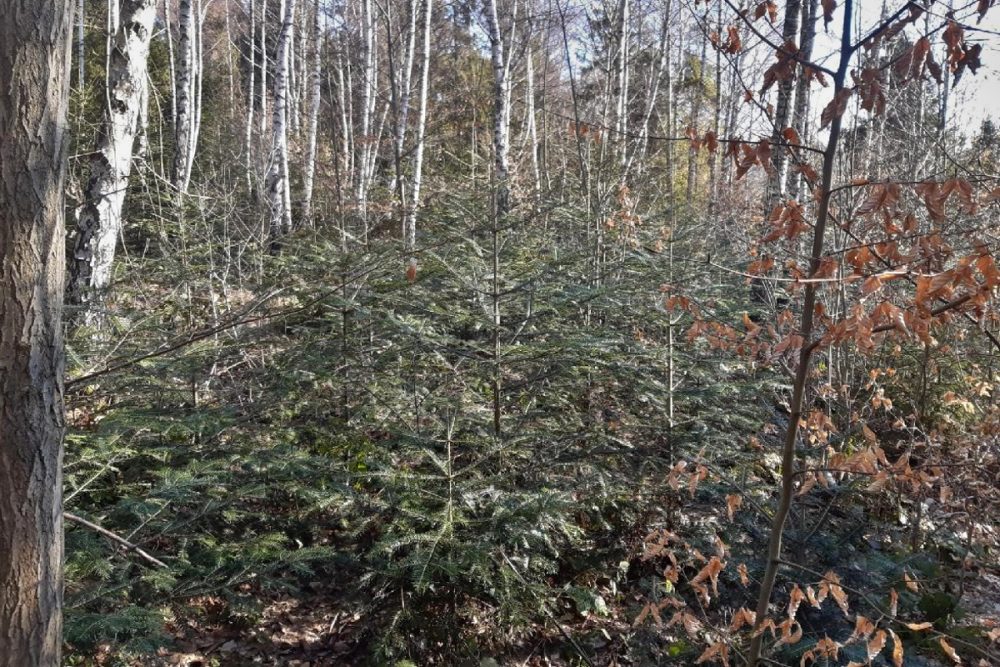 In our site conditions, it is possible very well to use the preparatory stand of native pioneer tree species, such as birch and rowan tree, including alder, which is suitable to be used on waterlogged sites. These tree species are tolerant to stress from temperature fluctuations, and they are less demanding on the amount of nutrients in the soil.
In our site conditions, it is possible very well to use the preparatory stand of native pioneer tree species, such as birch and rowan tree, including alder, which is suitable to be used on waterlogged sites. These tree species are tolerant to stress from temperature fluctuations, and they are less demanding on the amount of nutrients in the soil.
Photo: Underplanting of Silver fir under birch stand, author Robert Polách
The research was carried out on experimental trials established in 2013 at locations affected by the blight and bark beetle in the Krnovsko region, in locations near the town Město Albrechtice (PLO 28 Předhoří Hrubého Jeseníku). Birch stands were selected according to three age categories (7, 15, 30 years), for alder and rowan the age was around 15 years. The age of the evaluated underplanted firs was four years.
The researchers found that the mortality of the fir was low, during the observed four years after planting. The highest mortality, 6%, was observed in case of plantings in the clear-cut area (where the proportion of lost individuals was highest already after the first two years after planting), but also under dense stands of seven-year-old birch and 15-year-old rowan. However, losses of up to 10% do not mean a threat to the development of the growth.
As part of the research, a highly demonstrable effect of the age and rooting of the preparatory birch stand on the evaluated growth and morphological parameters of the four-year-old fir underplanting has also been found. In all age categories, the growth in the year height and total height clearly decreased with increasing density of the stand. By comparing the growth of firs planted on the clear-cut area and in the variants of the lowest stand density of all age categories of the preparatory birch stand, the researchers demonstrated a more favourable height development in the category of 15 years and on the clear-cut area.
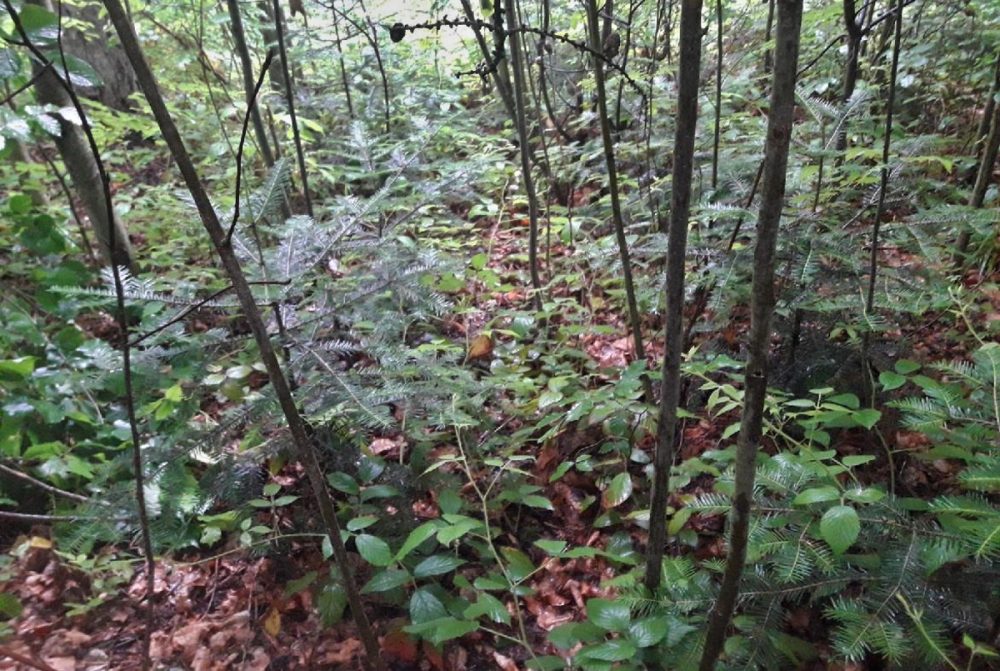 Photo: Underplanting of Silver fir under rowan stand, author Robert Polách
Photo: Underplanting of Silver fir under rowan stand, author Robert Polách
The fir mortality was low in all analysed treatments during the monitored period (up to 6%). It was the highest in the clearing and under dense stands of 7-year-old birches and 15-year-old rowans.
Among the main results which could be understood as the base for other silviculture procedures recommendation, they should be mention these ones – starting by confirment of the very low fir mortality in all evaluated stand treatments. The fir grew the best in the small clearing created in a preparatory stand (up to 0.1 ha) and under about 15-year-old birch stand with reduced stocking to 5.
The positive fact for fir development especially in the clearing was no late frost damage occurring in the monitored area during the assessment period. Every analysed variant of the preparatory stands proved to be usable for the successful fir underplanting. However, the underplanted fir growing intensity declined in all birch and rowan age categories when their stocking density increased. The results suggest that early (usually within 5 years after the underplanting) preparatory stand density reduction is needed when its stocking is higher than 7 to support the fir development. From the point of view of survival, the increased irradiance of the clear-cut area had a similar effect as significant shading by the cover stand.
The development of the fir on the tested clear-cut area confirms that the ideal conditions for the growth of the fir can also be included in growing pots up to a maximum of 0.1 ha. The chosen size was also suitable from the point of view of the risk of accumulation of cold air, which occurs in the growth gaps of non-homogeneous stands due to the influence of night air flow and which did not appear here
The most suitable conditions for the preparatory birch stand for fir growth were found when it was developed in 15 years. However, even a 7-year-old or 30-year-old birch stand did not represent an obstacle for the development of fir, especially when at least a partial reduction of the canopy was carried out.
Photo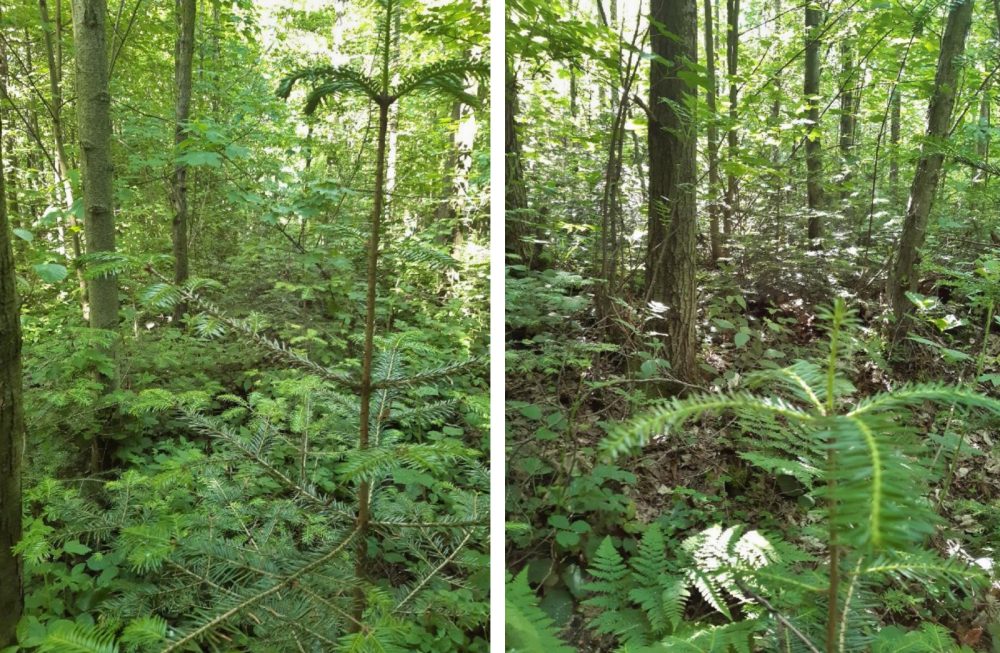 : Underplanting of Silver fir under alder stand, author Robert Polách
: Underplanting of Silver fir under alder stand, author Robert Polách
The researchers concluded that the results obtained show a different effect of the preparatory stands of birch, rowan and alder on the underplanted fir. While in the tested 15-year-old stands of rowan, stand density 7 really appeared to be optimal, the growth response of fir under alder was similar in all tested variants of stand density. And under the birch, the fir, regardless of the age of the preparatory stand, grew best under stand sections with stand density 5.
The results of the research indicated that the growth of each of the tested preparatory trees shapes the growth microclimate in a different way. It can also have a different effect on the soil environment, especially in the case of alder thanks to its symbiosis with bacteria that help fixation of nitrogen.
For the further development of underplantings, scientists recommend forest regeneration by underplanting way with gradual, low-intensity logging interventions so that fir underplantings were not exposed to sudden changes in the microclimate.
By evaluating the results of four-year-old underplantings into preparatory stands consisting of birch, rowan and alder with variant stand density, the scientists confirmed the adaptability of fir to different light conditions.
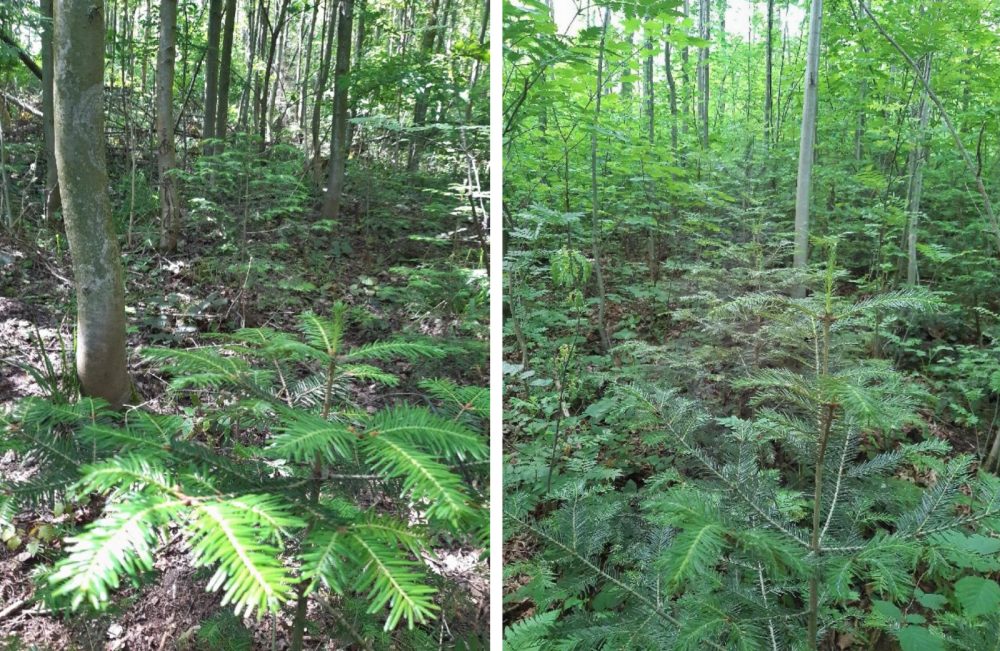 Photo: Underplanting of Silver fir under rowan stand, author Robert Polách
Photo: Underplanting of Silver fir under rowan stand, author Robert Polách
All tested variants of preparatory stands proved to be useful for the successful establishment of fir underplantings. However, in all age categories of birch as well as of cranesbill, the intensity of fir regrowth decreased with increasing density of the preparatory stand.
The paper was created during the solution of the project QK1910292 “Procedures for the support of white fir in the forest management of the Czech Republic” („Postupy pro podporu jedle bělokoré v lesním hospodářství ČR“).
The paper „Prosperity of Silver fir planted under preparatory stands of pioneer broadleaves of different stocking and age“ (Prosperita jedle v podsadbách pod přípravnými porosty listnatých dřevin o různém zakmenění a věku) can be downloaded here.
Authors of paper: Robert Polách, Ondřej Špulák, e-mail: robert.polach@lesycr.cz
Prepared by Ing. Jan Řezáč, FGMRI (VÚLHM, v. v. i.), e-mail: rezac@vulhm.cz
Introductory photo: Underplanting of Silver fir under birch stand, author Robert Polách
